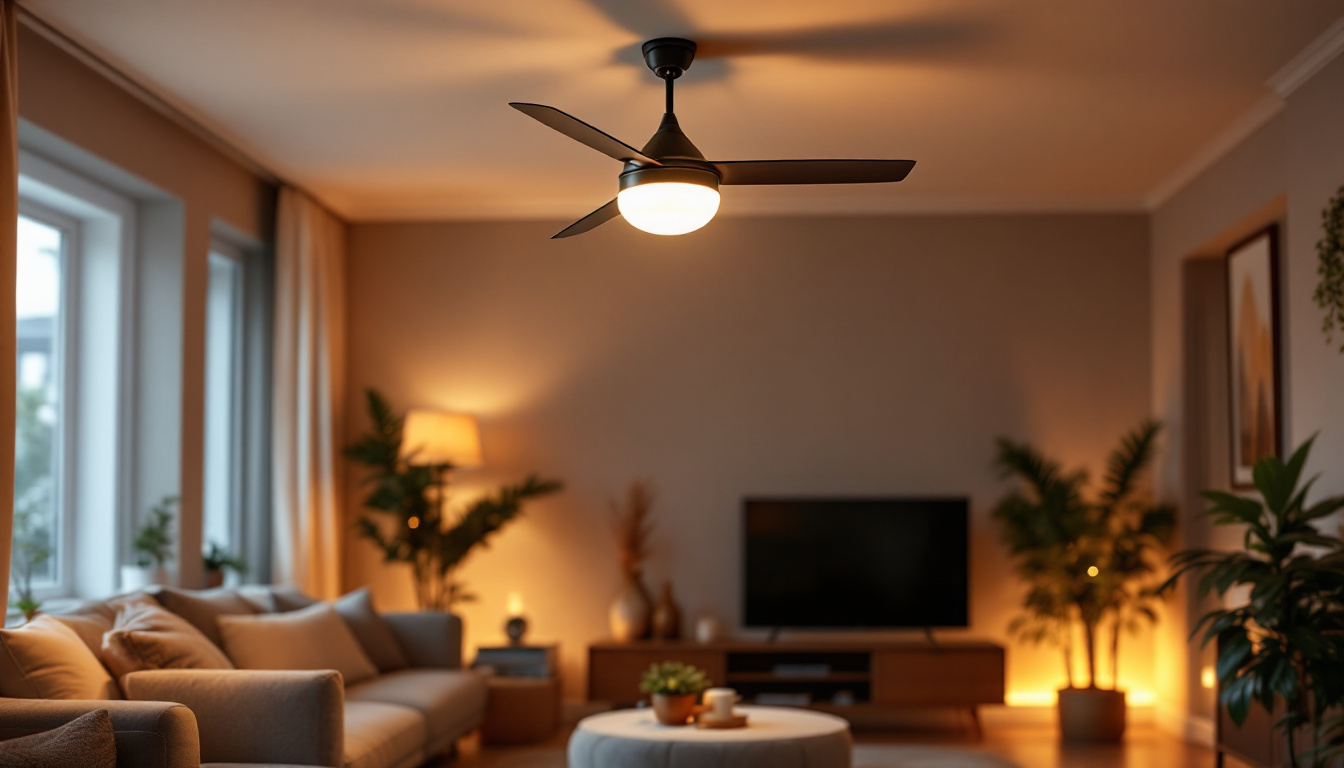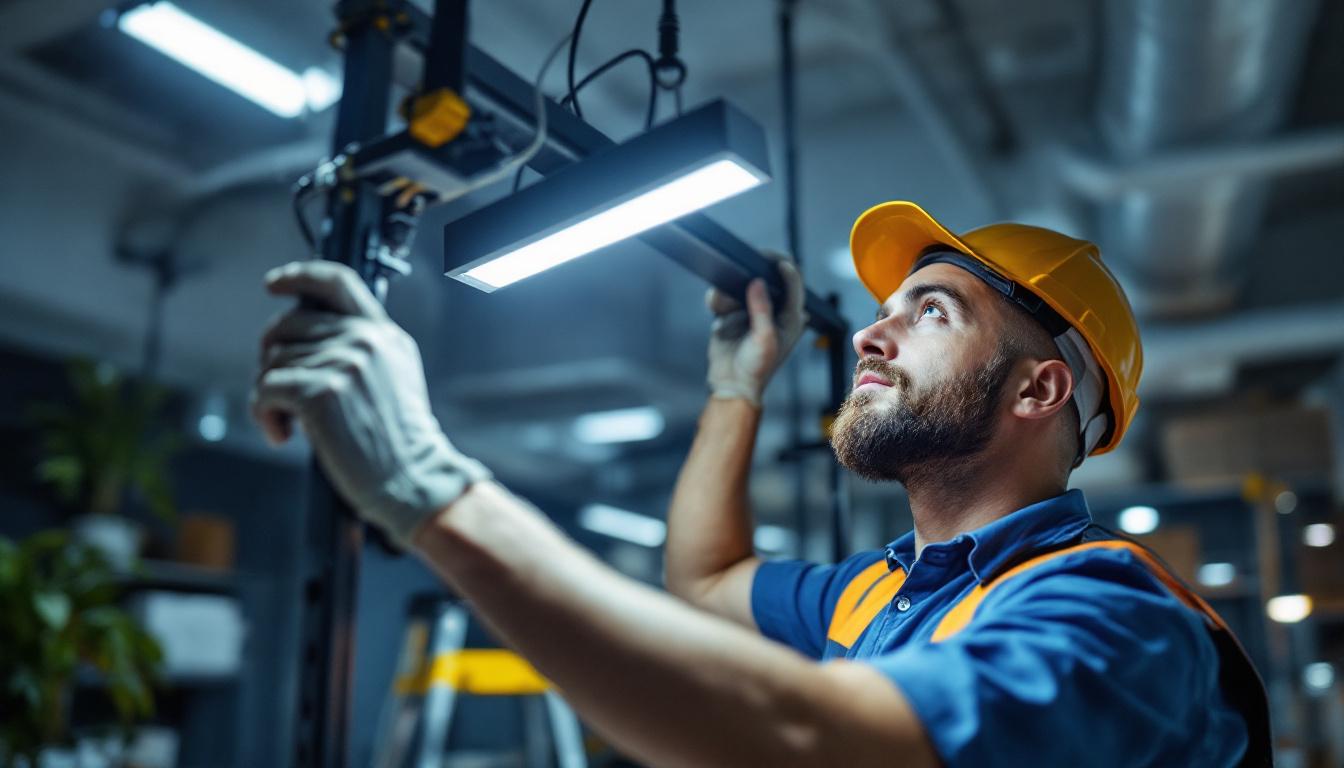
In the world of lighting installations, safety is paramount. While many may think of safety in terms of electrical wiring and fixture placement, the role of ceiling fans in enhancing safety is often overlooked. Not only do ceiling fans provide comfort and aesthetic appeal, but they also contribute to the overall safety of lighting installations. This article delves into how ceiling fans can enhance safety, their price considerations, and the implications for lighting contractors.
Ceiling fans are more than just decorative elements in a room; they play a critical role in maintaining a safe and comfortable environment. By improving air circulation, they can help mitigate issues related to humidity and temperature, which are essential for the longevity and efficiency of lighting fixtures.
Moreover, ceiling fans can assist in reducing the risk of overheating in light fixtures. When fixtures become too hot, they can pose a fire hazard. By ensuring proper air circulation, ceiling fans help maintain a stable temperature around lighting installations, thereby enhancing safety.
Effective air circulation is vital in any environment, especially in spaces where electrical installations are present. Ceiling fans help to distribute air evenly throughout a room, preventing hot spots that can lead to overheating. This is particularly important in areas with high-intensity lighting, where fixtures can generate significant heat.
By keeping the air moving, ceiling fans can lower the perceived temperature in a room, allowing for a more comfortable environment. This is especially beneficial in commercial spaces where lighting is often left on for extended periods, and the risk of heat buildup is higher. In residential settings, the combination of ceiling fans and strategically placed lighting can create a cozy atmosphere while maintaining energy efficiency, as the fans can allow homeowners to set their thermostats a few degrees higher without sacrificing comfort.
In addition to temperature control, ceiling fans play a crucial role in reducing humidity levels. High humidity can lead to condensation, which may affect electrical installations and create an environment conducive to mold growth. By promoting airflow, ceiling fans help to evaporate moisture, thereby minimizing the risk of damage to lighting fixtures and other electrical components.
For lighting contractors, understanding the relationship between humidity and electrical safety is essential. Installing ceiling fans in conjunction with lighting fixtures can significantly enhance the longevity of the installation and reduce the likelihood of maintenance issues. Furthermore, the aesthetic appeal of ceiling fans can complement various lighting designs, creating a cohesive look that enhances the overall ambiance of a space. Whether in a modern loft or a traditional home, the right ceiling fan can serve as a stylish focal point while simultaneously providing functional benefits that contribute to a healthier indoor environment.
The price of ceiling fans can vary widely based on several factors, including design, size, and features. For lighting contractors, understanding these cost considerations is crucial for providing clients with accurate estimates and ensuring that installations remain within budget.
While some may view ceiling fans as an added expense, their long-term benefits can outweigh initial costs. They not only enhance safety but also contribute to energy efficiency, which can lead to cost savings over time. In fact, many homeowners find that using ceiling fans in conjunction with their air conditioning systems allows them to set their thermostats a few degrees higher without sacrificing comfort, thereby reducing energy consumption and costs significantly.
When considering the price of ceiling fans, several factors come into play. The brand, design, and features such as remote control capabilities or integrated lighting can all influence cost. For lighting contractors, it is essential to assess the specific needs of a project to determine the most suitable fan options. Additionally, the materials used in construction, such as metal versus plastic, can also affect pricing. Higher-quality materials may come at a premium but often provide better durability and performance over time.
Additionally, the size of the ceiling fan can impact its price. Larger fans may cost more but can provide better air circulation in spacious environments. Conversely, smaller fans may be more affordable but may not be as effective in larger areas. It’s also worth noting that the installation complexity can vary; some fans may require more intricate electrical work or additional support, which can further influence the overall cost. Contractors should be prepared to discuss these factors with clients to ensure they make informed decisions.
While the upfront cost of ceiling fans may seem significant, their long-term value should not be overlooked. By enhancing safety and improving energy efficiency, ceiling fans can lead to reduced energy bills and lower maintenance costs for lighting installations. Furthermore, many modern ceiling fans come equipped with energy-efficient motors and LED lighting, which can further enhance their cost-effectiveness over time.
Moreover, the comfort and aesthetic appeal that ceiling fans provide can enhance the overall value of a property, making them a worthwhile investment for homeowners and businesses alike. Lighting contractors should emphasize these benefits to clients when discussing ceiling fan options. The variety of styles available—from sleek, contemporary designs to more traditional looks—means that there is a ceiling fan to suit every taste and décor. This versatility not only adds to the visual appeal of a space but can also create a more inviting atmosphere, which is particularly important in commercial settings where customer comfort is paramount.
Modern ceiling fans come equipped with various safety features designed to enhance their performance and reduce risks associated with electrical installations. Understanding these features can help lighting contractors make informed recommendations to clients.
From blade design to motor quality, several aspects contribute to the overall safety of ceiling fans. By selecting fans with high safety ratings and reliable components, contractors can ensure that their installations meet industry standards.
The design and material of ceiling fan blades can significantly impact their safety and performance. Fans with well-designed blades can operate more efficiently, reducing the risk of wobbling or failure during operation. Additionally, materials such as high-quality plastics or metals can withstand wear and tear, ensuring longevity.
Contractors should consider recommending fans with blades that are specifically designed to minimize noise and vibration. This not only enhances user comfort but also reduces the risk of mechanical failure, which can lead to safety hazards. Furthermore, some manufacturers incorporate aerodynamic designs into their blades, allowing for improved airflow and energy efficiency. This not only contributes to a more pleasant indoor environment but also ensures that the fan operates within safe parameters, reducing the likelihood of overheating or electrical issues.
The motor is the heart of any ceiling fan, and its quality directly affects the fan’s performance and safety. High-quality motors are designed to operate quietly and efficiently, reducing energy consumption and minimizing the risk of overheating.
When selecting ceiling fans, contractors should look for models with energy-efficient motors that comply with safety standards. This not only ensures a safer installation but also promotes sustainability, which is increasingly important in today’s market. Additionally, many modern ceiling fans come equipped with built-in thermal overload protection, which automatically shuts off the motor if it begins to overheat. This feature is crucial in preventing potential fire hazards and prolonging the lifespan of the fan. By choosing fans with these advanced motor technologies, contractors can provide clients with peace of mind, knowing that their installations prioritize both safety and efficiency.
Integrating ceiling fans with lighting installations can create a cohesive and functional design. This integration not only enhances the aesthetic appeal of a space but also contributes to safety by ensuring that all components work harmoniously together.
For lighting contractors, understanding how to effectively combine ceiling fans with lighting fixtures is essential for creating successful installations. This involves considering factors such as placement, design compatibility, and functionality.
The placement of ceiling fans in relation to lighting fixtures is crucial for both safety and aesthetics. Fans should be positioned to provide optimal airflow without obstructing light sources. Additionally, the design of the fan should complement the overall style of the lighting fixtures to create a unified look.
Contractors should also consider the height of the ceiling when installing fans. Proper clearance is necessary to ensure safety and functionality, particularly in rooms with low ceilings where fans may pose a risk of contact with occupants.
Ensuring that ceiling fans and lighting fixtures work together seamlessly enhances the overall user experience. This can involve integrating smart technology that allows users to control both lighting and fan settings from a single interface.
By providing clients with options for remote control or app-based systems, contractors can enhance convenience and safety. Users can adjust settings without needing to access fixtures directly, reducing the risk of accidents or electrical hazards.
Ceiling fans play a vital role in enhancing safety in lighting installations. From improving air circulation to reducing humidity levels, their benefits extend far beyond mere aesthetics. For lighting contractors, understanding the importance of ceiling fans can lead to better project outcomes and increased client satisfaction.
While the initial investment in ceiling fans may vary, their long-term value and contributions to safety cannot be overstated. By selecting high-quality fans with essential safety features and integrating them effectively with lighting installations, contractors can ensure that their projects meet both safety standards and client expectations.
In a world where safety is paramount, ceiling fans emerge as a critical component in the realm of lighting installations. Their ability to enhance comfort, reduce risks, and provide energy efficiency makes them an indispensable choice for any lighting contractor looking to deliver exceptional results.
Ready to enhance the safety and efficiency of your lighting installations with top-quality ceiling fans? Look no further than LumenWholesale. Our extensive selection of spec-grade ceiling fans is designed to meet the highest industry standards, ensuring you get reliable, high-performance products for your projects. With unbeatable wholesale prices and the convenience of free shipping on bulk orders, LumenWholesale is your go-to source for premium lighting solutions. Don’t compromise on quality or value—explore our collection and start saving today.

Discover expert tips and strategies for lighting contractors to master the installation and optimization of 2X4 light fixtures.

Discover why LED shop lights from Lowe’s are essential for modern lighting installations.

Discover why outdoor LED flood light fixtures are the essential component missing from your lighting projects.

Discover the essential checklist for lighting contractors when installing light fan fixtures.